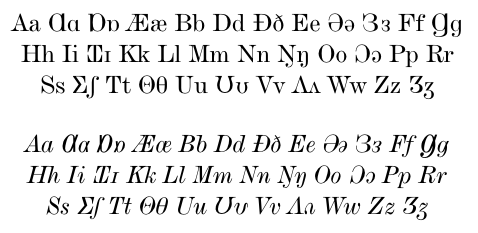Case variants of IPA letters

With the adoption of letters from the International Phonetic Alphabet (IPA) in various national alphabets, letter case forms have been developed. This usually means capital (uppercase) forms were developed, but in the case of the glottal stop ʔ, both uppercase ⟨Ɂ⟩ and lowercase ⟨ɂ⟩ are used.
The adoption of IPA letters has been particularly notable in Sub-Saharan Africa, in languages such as Hausa, Fula, Akan, Gbe languages, Manding languages, and Lingala. The most common are open o ⟨Ɔ ɔ⟩, open e ⟨Ɛ ɛ⟩, and eng ⟨Ŋ ŋ⟩, but several others are found. Kabiyé of northern Togo, for example, has ⟨Ɔ ɔ, Ɛ ɛ, Ɖ ɖ, Ŋ ŋ, Ɣ ɣ, Ʃ ʃ, Ʊ ʊ⟩ (or ⟨Ʋ ʋ⟩), as in this newspaper headline:
- MBƱ AJƐYA KIGBƐNDƱƱ ŊGBƐYƐ KEDIƔZAƔ SƆSƆƆ TƆM SE.
Some of the IPA letters that were adopted into language orthographies have since become obsolete in the IPA itself.
Chart
Following are IPA letters and their capital forms. A few of these capitals have lowercase forms that are either a variant of or distinct from the IPA letter.
Others letters are the graphic equivalent of IPA capitals, but are not identified with the IPA. Examples are ʗ ∁ (complement symbol), ɘ ∃ (existential quantifier symbol), ɟ Ɉ (the capital of ɉ) or ɟ Ⅎ (the capital of ⅎ), ɾ ꓩ (Lisu letter Fa), ɰ Ꚇ (Cyrillic capital letter Cche), and ʎ ⅄ (the capital of λ in Americanist usage). Also, includes obsolete and nonstandard IPA symbols: